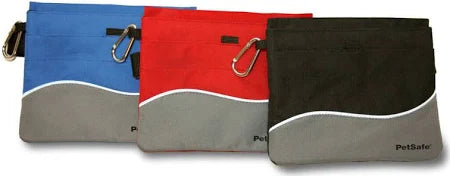Frequently Asked Questions
1. Why is fiber important for pets?
2. What are the types of fiber suitable for pets?
3. How much fiber should my pet get?
4. What signs indicate my pet may need more fiber?
5. How can I incorporate fiber into my pet's diet?
When it comes to ensuring our pets lead a healthy and happy life, diet plays a crucial role. One component that is often overlooked yet incredibly vital is fiber. Understanding the role of fiber in pet diets can greatly impact their overall well-being. In this comprehensive guide, we will delve into the benefits of fiber, sources of nutrients, and how to incorporate the right amount into your pet's diet.
Why is Fiber Important for Pets?
Fiber is an essential carbohydrate that is not digested by your pet's body but offers numerous health benefits. Though often associated with human diets, fiber is equally important for dogs and cats. Here are a few reasons why fiber should be a staple in your pet’s diet:
Regulating Digestion
One of the primary roles of fiber is to promote digestive health. It aids in regulating bowel movements and can help prevent constipation and diarrhea. For pets that have sensitive stomachs or digestive issues, adequate fiber intake can be a game-changer.
Weight Management
Obesity is a growing concern among pets today. Including the proper amount of fiber in their diets can help maintain a healthy weight. Fiber can create a sense of fullness, allowing pets to feel satisfied with smaller portions. This can significantly help in managing their appetite and reducing overall caloric intake.
Supporting Overall Health
Fiber also contributes to overall health by aiding in disease prevention. A high-fiber diet can help lower the risk of certain conditions, such as diabetes and gastrointestinal diseases. By incorporating fiber, you can take proactive steps toward improving your pet's health in the long run.
Types of Fiber for Pets
Not all fibers are created equal, and understanding the different types can help you make informed decisions about your pet's diet. Fiber can be broadly categorized into two types: soluble fiber and insoluble fiber.
Soluble Fiber
Soluble fiber dissolves in water and forms a gel-like substance in the digestive tract. It is known to help regulate blood sugar levels and lower cholesterol. Sources of soluble fiber include oats, barley, and many fruits and vegetables, which can be beneficial for pets with weight management issues.
Insoluble Fiber
Insoluble fiber, on the other hand, does not dissolve in water but adds bulk to the stool, which aids in regularity. This type of fiber is beneficial for pets that often experience constipation. Sources of insoluble fiber include whole grains, wheat bran, and leafy greens.
How Much Fiber Should Your Pet Get?
Determining the right amount of fiber for your pet can depend on various factors, including their size, age, and health status. Generally, it's recommended to have about 2-5% of a dog’s diet come from fiber. For cats, the fiber content can range from 1-5%. Always consult with your veterinarian to tailor fiber intake according to your pet’s unique needs.
Signs Your Pet Needs More Fiber
It’s essential to keep an eye on your pet’s behavior and health as it can indicate whether they are getting enough fiber. Some signs that your pet may require additional fiber include:
- Inconsistent bowel movements (diarrhea or constipation)
- Excessive weight gain
- Frequent vomiting
- Signs of discomfort or straining during defecation
Incorporating Fiber into Your Pet’s Diet
Once you understand the types and benefits of fiber, the next step is incorporating it into your pet’s diet. Here are several methods to ensure your furry friends receive adequate fiber:
Enriching Their Meals
Start by adding fruits and vegetables to your pet's meals. Suitable options for dogs include carrots, zucchini, and green beans. For cats, try pumpkin or fine-chopped greens. Always introduce new foods gradually to avoid digestive upset.
Choosing High-Quality Pet Foods
Not all pet foods are created equal. Look for high-quality brands that list fiber-rich ingredients near the top of their ingredient list. As a rule of thumb, the more whole ingredients, the better the fiber content typically is.
Supplementing Fiber
If your pet is still lacking fiber after dietary changes, consider supplements. There are various fiber supplements available in the market that can make it easier to ensure your pet gets their daily intake of fiber. However, always consult your vet before adding supplements to your pet's diet.
Common Myths About Fiber
As with any topic related to pet care, misconceptions about fiber are widespread. Let’s debunk a few common myths:
Myth: All Fiber is the Same
This is false. As previously discussed, soluble and insoluble fibers serve different purposes in animal health. Understanding these differences can help in prioritizing your pet’s dietary needs.
Myth: Fiber is Only Necessary for Older Pets
While older pets may require additional fiber due to decreased digestive efficiency, fiber is essential for pets of all ages. Puppies and kittens also benefit from adequate fiber intake as it helps support a healthy growth process.
Myth: All Fiber Sources are Safe
Not all fruits and vegetables are safe for pets. Certain foods, like grapes, onions, and avocados, can be toxic. It’s crucial to research and consult with your veterinarian before adding new items to your pet’s diet.
Final Thoughts on Fiber's Importance
Understanding the role of fiber in your pet's diet is vital for their overall health and happiness. When properly incorporated, fiber can support digestion, manage weight, and help prevent serious health issues. Always assess your pet's unique dietary needs, keep an eye on any changes, and consult your veterinarian for guidance. By prioritizing fiber, you’re not just providing nutrition; you’re paving the path for a longer, healthier, and happier life for your furry family members!


































































































